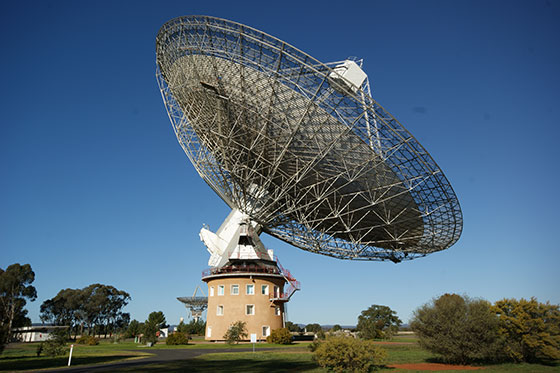The World Next Door
By Seth Shostak
 Parkes Observatory, New South Wales, Australia credit: Ian Sutton
Parkes Observatory, New South Wales, Australia credit: Ian Sutton
If it’s for real, it’s the closest planet beyond our solar system. The closest planet in outer space.
Astronomers using a telescope at the European Southern Observatory in Chile have announced the discovery of a world around the star Proxima Centauri, the nearest star to us other than the Sun. They base this on very slight stellar wobbles – a convincing claim resting on more than a dozen years of accumulated data.
Proxima Centauri’s paltry distance (4.2 light-years) is matched by its paltry size: It’s a dim bulb, a red dwarf that’s only one-seventh the Sun’s diameter. The newly discovered planet orbits this star in only 11 Earth days. This cheek-by-jowl relationship ensures that, despite Proxima Centauri’s meager energy output, there’s enough sunlight hitting the planet to sustain large bodies of liquid water. There could be oceans covering at least some of this world, and where there’s water, there might be life.
But is there? It’s a question as obvious as the Matterhorn. Unfortunately, it’s hard to get an answer.
